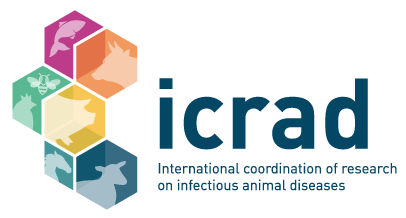Project details
Acronym: CAE-RAPID
Researcher: Dr Michał Czopowicz
Countries: Poland, Hungary, Lithuania, Norway, Switzerland
Website: www.sggw.edu.pl

Project Summary
The objective of CAE-RAPID is to develop the rapid immunochromatographic diagnostic test (point-of-care test) for caprine arthritisencephalitis (CAE) – a viral, lifelong and incurable disease of goats caused by small ruminant lentiviruses (SRLV), members of Retroviridae family. To achieve this objective CAE-RAPID team brings together 5 partners (research institutions) in 5 different countries. Additionally, the involvement of a private company as a subcontrator is assumed.
CAE is widespread worldwide and due to its considerable negative influence on mobility, welfare and productivity of goats, it is currently considered as one of the main threats to goat production in the European countries. The principal route through which the disease enters and spreads in herd is the introduction an asymptomatically infected goat. Therefore the prevention is crucial for an effective CAE control.
The major challenge of CAE diagnostics results from the long time which elapses between the infection and the emergence of first apparent signs. During this time the disease insidiously spreads between goats and when the farmer realizes that something is wrong usually a substantial proportion of goats in the herd is already infected. Currently, the mainstay of CAE diagnostics are serological tests. Even though they are highly accurate, their price including the veterinary service necessary for blood sample collection and its transportation to the laboratory, and the time which it takes to obtain results from laboratory hinder their routine use when a single animal needs to be tested.
CAE-RAPID aims to improve individual diagnostics of CAE by providing an easily available and convinient tool for reliable exclusion and early detection of the disease. The rapid test for detection of antibodies to SRLV in a drop of milk, serum or whole blood will be intended for use in two basic situations. First, for on-site quick screening of asymptomatic goats which are intended to be purchased or introduced into the herd. Second, for on-site quick screening of goats in which first clinical signs have emerged. The test will be a screening diagnostic method so it will be expected to maximize diagnostic sensitivity and the negative predictive value, so that a goat that tests negative can be safely introduced into or retained in the herd. Positive results will need verification in the laboratory.
To develop a highly reliable, accurate and easy to use in-field test the most prevalent SRLV genotypes and subtypes will be identified in a large scale virological survey carried out in CAE-affected goat herds.
Then, the most optimal viral antigen capable of detecting antibodies to as broad spectrum of SRLV as possible will be prepared and evaluated by developing and comparing several immunoenzymatic test in the laboratory (WP1). On the basis of the most optimal antigen the rapid immunochromatographic test will be manufactured (WP2) by a professional company. The biggest part of the project will be dedicated to the CAE-RAPID test validation in laboratory and field conditions.
First (WP3), blood and milk samples from 600 SRLV-infected goats (asymptomatic and symptomatic) and 1000 uninfected goats will be collected in Polish goat herds and in Norwegian herds officially recognized as free from CAE, respectively.
Truly infected and truly uninfected samples will be used for determination of the rapid test’s sensitivity and specificity, respectively, done on blood and milk samples, with very high confidence (95%) and precision (±2%). Sensitivity will be estimated separately for symptomatic and asymptomatic goats to assess the two expected indications for CAE-RAPID test’s use.
Then (WP4), CAE-RAPID test will be performed in roughly 500 goats in field conditions by persons uninvolved in previous stages of the project and unaware of the true health status of tested individuals to verify test’s diagnostic performance and reliability in a blinded study.
